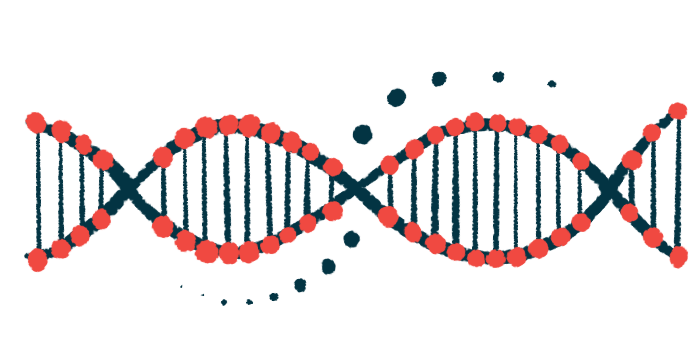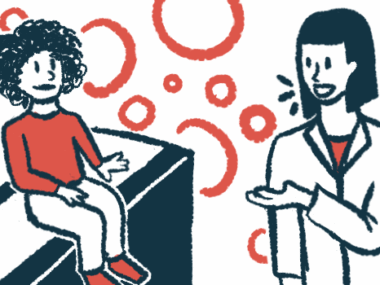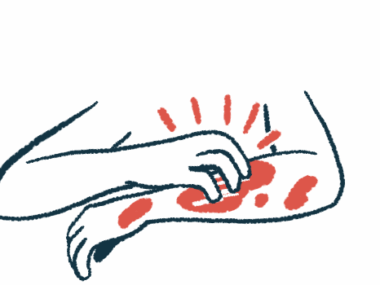Alagille syndrome symptoms vary by gene mutation, study finds
Patients with JAG1, NOTCH2 mutations show different disease signs
Written by |

People with Alagille syndrome display different disease characteristics depending on whether the disease-causing mutation is located in the JAG1 gene or the NOTCH2 gene, according to data from a global study.
Patients with NOTCH2 mutations had fewer heart anomalies and lower incidence of distinctive facial characteristics or unusual vertebrae shapes, the study found. As NOTCH2 mutations are less common, there has been less research about related disease features.
“Relying only on typical signs and symptoms may miss cases of ALGS [Alagille syndrome] due to NOTCH2 variants,” the researchers wrote, suggesting that broader genetic testing frameworks may help in the diagnostic process.
In addition to identifying differences in disease presentation, or phenotype, the team performed extensive analysis on several NOTCH2 mutations linked to Alagille, including 18 that hadn’t been previously reported, and assessed the likelihood of each mutation causing Alagille.
The study, “Phenotypic Divergence of JAG1- and NOTCH2-Associated Alagille Syndrome & Disease-Specific NOTCH2 Variant Classification Guidelines,” was published in Liver International.
Symptoms span a range of organs, systems
Alagille syndrome is a genetic disease that may affect several organs and systems. Alagille symptoms include liver problems, heart abnormalities, eye issues, distinctive facial features and irregular, butterfly-shaped vertebrae. The condition can also affect the kidneys and blood vessels.
Alagille is characterized by problems with the Notch signaling pathway — which is important for embryonic development — due to mutations in one of two Notch genes, JAG1 (94.3% of cases) and NOTCH2 (2.5% of cases).
The presence of a disease-causing mutation in one of these genes and at least one characteristic sign of the disease may be sufficient to confirm a diagnosis of Alagille syndrome. Without genetic testing, a person generally needs to exhibit at least three signs or symptoms.
It is difficult to establish if a certain JAG1 or NOTCH2 mutation directly causes Alagille. Classifying mutations as likely disease-causing, benign, or as a variant of uncertain significance (VOUS) could help scientists better understand the disease’s underlying processes.
The team of international researchers said they “sought to improve classification of NOTCH2 variants and study phenotypic differences between NOTCH2– and JAG1-related disease.”
They looked at 952 people with Alagille who were recruited at 66 medical institutions across 29 countries as part of the Global Alagille Alliance (GALA) study, the largest Alagille natural history study.
The team excluded anyone in the GALA database without complete genetic testing data available.
As expected, most participants (94.7%) had JAG1 mutations, while 3.6% had NOTCH2 mutations. Mutations in either gene could not be detected in 1.7% of participants. With 34 Alagille patients carrying NOTCH2 mutations, “this study presents the largest NOTCH2 [patient group] described to date” in Alagille, the researchers wrote.
Results showed that rates of liver, kidney, and blood vessel involvement were comparable between the JAG1 and NOTCH2 groups, but there were several significant differences in other disease features.
Characteristic facial features were present in 90.1% of participants with JAG1 mutations and 57.6% of those with NOTCH2 mutations. Significantly more people with JAG1 mutations had heart anomalies (92.2% vs. 64.3%) or butterfly vertebrae (44.5% vs. 3.3%).
Posterior embryotoxon, an eye abnormality commonly seen in Alagille and marked by a white ring lining the membrane that covers the eyeballs, was also reported more frequently in the JAG1 mutation group (52.8% vs. 18.5%).
“These phenotypic differences should be considered during clinical evaluation for ALGS,” the researchers wrote.
Overall survival and likelihood of needing a liver transplant didn’t differ significantly between the groups.
Database is ‘an invaluable resource’ for doctors, scientists
Among the participants with NOTCH2 mutations, there were 30 unique genetic variants, 18 of which had not been previously described in the literature. This increased the number of reported Alagille-related NOTCH2 variants by about 30%, the team noted.
Based on a number of validated criteria and disease-specific modification, the team classified each NOTCH2 variant on its potential to cause Alagille. Most of these mutations (60%) were classified as likely disease-causing/disease-causing, while the remaining 40% were deemed VOUS.
The most common variants had been previously reported, and included the disease-causing c.6007C>T (11.8%) and the likely disease-causing c.5858G>A (5.9%).
When looking at 61 NOTCH2 variants reported in patients outside GALA, the researchers reclassified 31.1% of them from likely disease-causing/disease-causing to VOUS, and one mutation from VOUS to likely disease-causing. About one-third retained their original classification.
Compiling these mutation ratings allowed the researchers to create a database of NOTCH2-related genetic profiles in Alagille.
“This catalogue serves as an invaluable resource for clinicians and clinical laboratory geneticists, facilitating interpretation and classification of NOTCH2 variants,” the team wrote.
They did not find an association between type of mutation and phenotype among patients with JAG1 or NOTCH2 mutations, “which is in agreement with previous studies,” the researchers wrote.
Based on the observed differences in disease features between the JAG1 and NOTCH2 groups, clinicians may want to consider genetic testing in the absence of certain typical characteristics, the team said.
One limitation of the study was that it focused on people with at least some characteristic features of Alagille.
“Further investigation will be necessary to determine if non-characteristic ALGS features can be present in … individuals” with NOTCH2 mutations, the researchers concluded.








